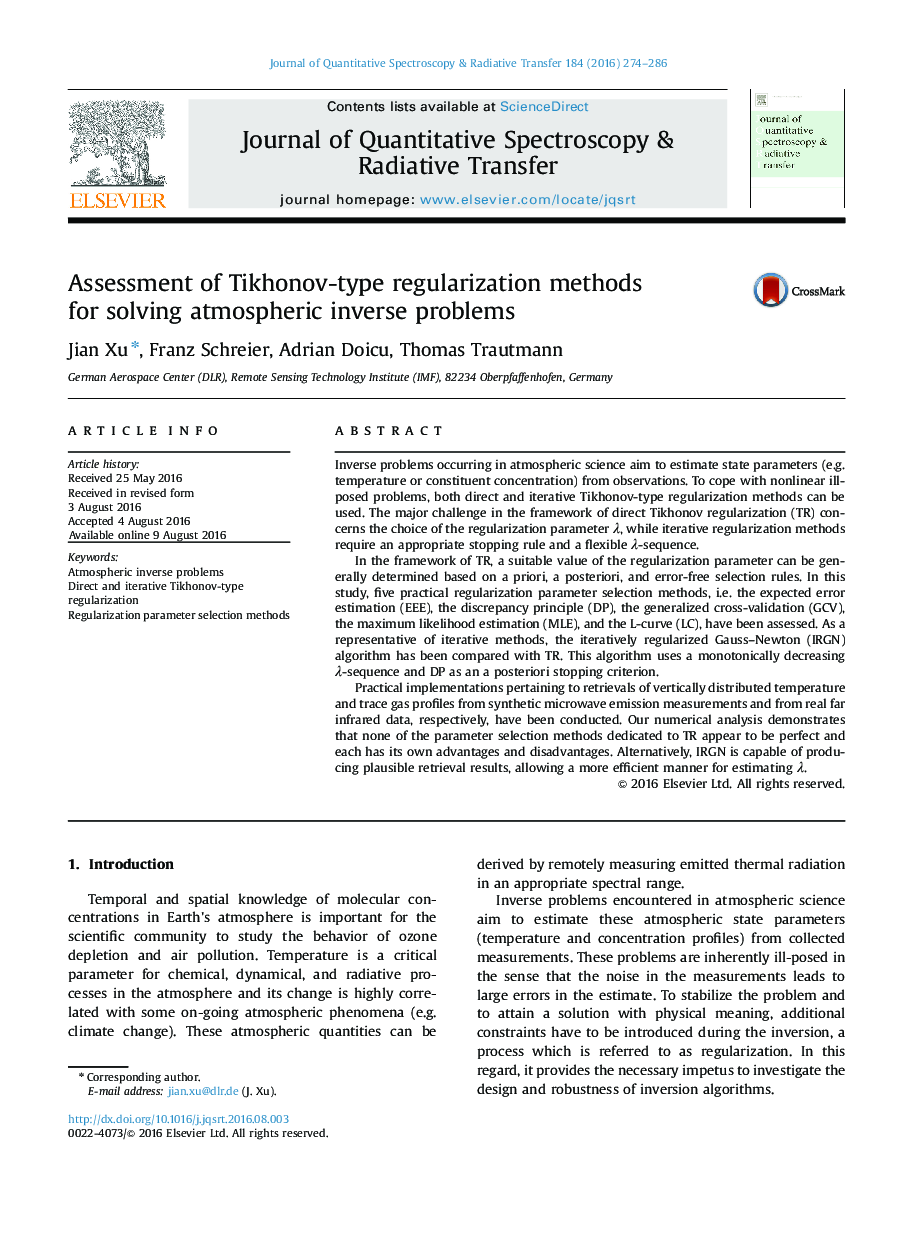| کد مقاله | کد نشریه | سال انتشار | مقاله انگلیسی | نسخه تمام متن |
|---|---|---|---|---|
| 5427474 | 1508631 | 2016 | 13 صفحه PDF | دانلود رایگان |
- Direct/iterative Tikhonov-type regularization methods tackle ill-posed problems.
- Practical implementations focus on retrievals from microwave and far infrared data.
- Five parameter selection methods have been assessed and none of them seems perfect.
- Iterative regularization methods turn out to be a reliable alternative.
Inverse problems occurring in atmospheric science aim to estimate state parameters (e.g. temperature or constituent concentration) from observations. To cope with nonlinear ill-posed problems, both direct and iterative Tikhonov-type regularization methods can be used. The major challenge in the framework of direct Tikhonov regularization (TR) concerns the choice of the regularization parameter λ, while iterative regularization methods require an appropriate stopping rule and a flexible λ-sequence.In the framework of TR, a suitable value of the regularization parameter can be generally determined based on a priori, a posteriori, and error-free selection rules. In this study, five practical regularization parameter selection methods, i.e. the expected error estimation (EEE), the discrepancy principle (DP), the generalized cross-validation (GCV), the maximum likelihood estimation (MLE), and the L-curve (LC), have been assessed. As a representative of iterative methods, the iteratively regularized Gauss-Newton (IRGN) algorithm has been compared with TR. This algorithm uses a monotonically decreasing λ-sequence and DP as an a posteriori stopping criterion.Practical implementations pertaining to retrievals of vertically distributed temperature and trace gas profiles from synthetic microwave emission measurements and from real far infrared data, respectively, have been conducted. Our numerical analysis demonstrates that none of the parameter selection methods dedicated to TR appear to be perfect and each has its own advantages and disadvantages. Alternatively, IRGN is capable of producing plausible retrieval results, allowing a more efficient manner for estimating λ.
Journal: Journal of Quantitative Spectroscopy and Radiative Transfer - Volume 184, November 2016, Pages 274-286
